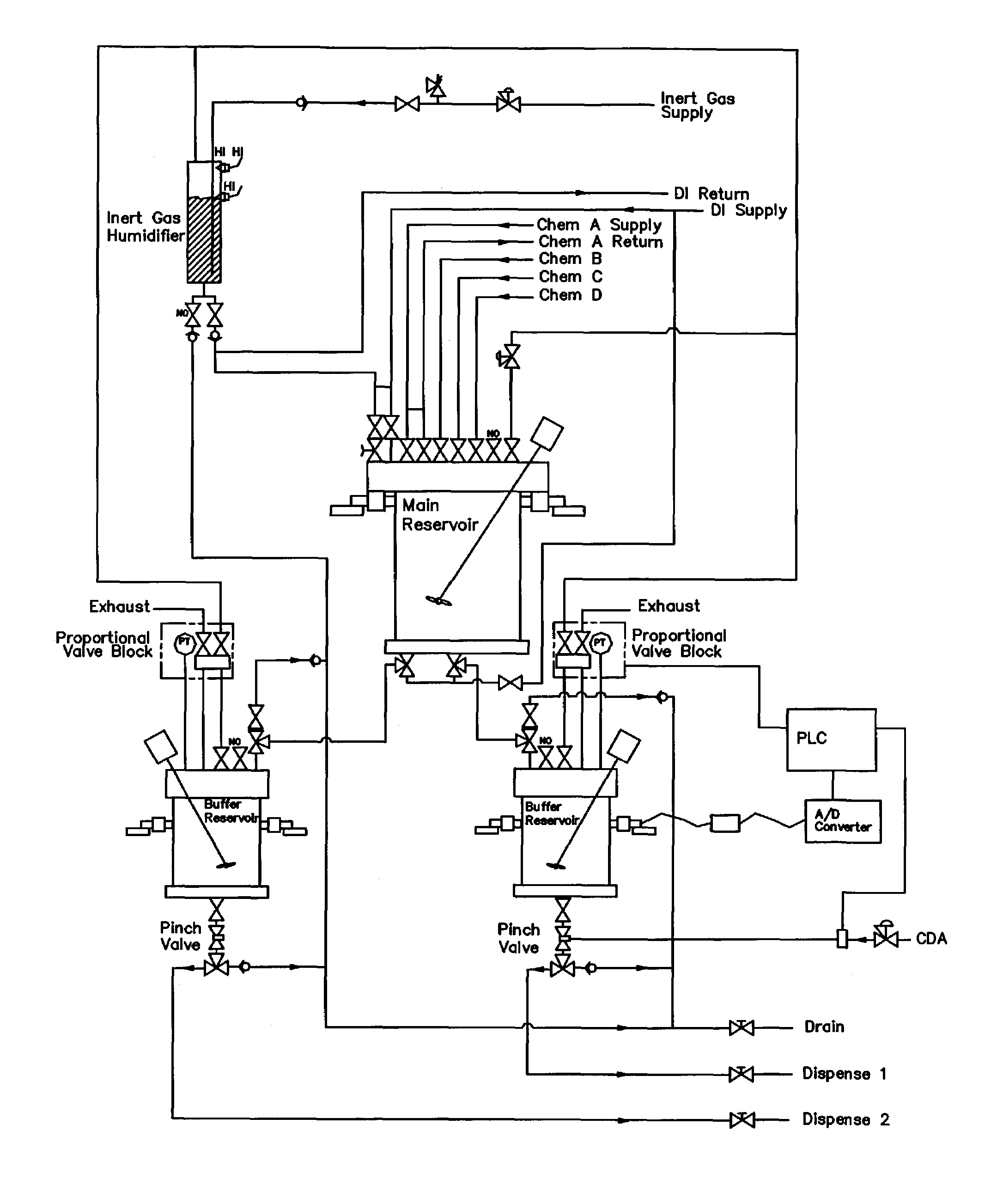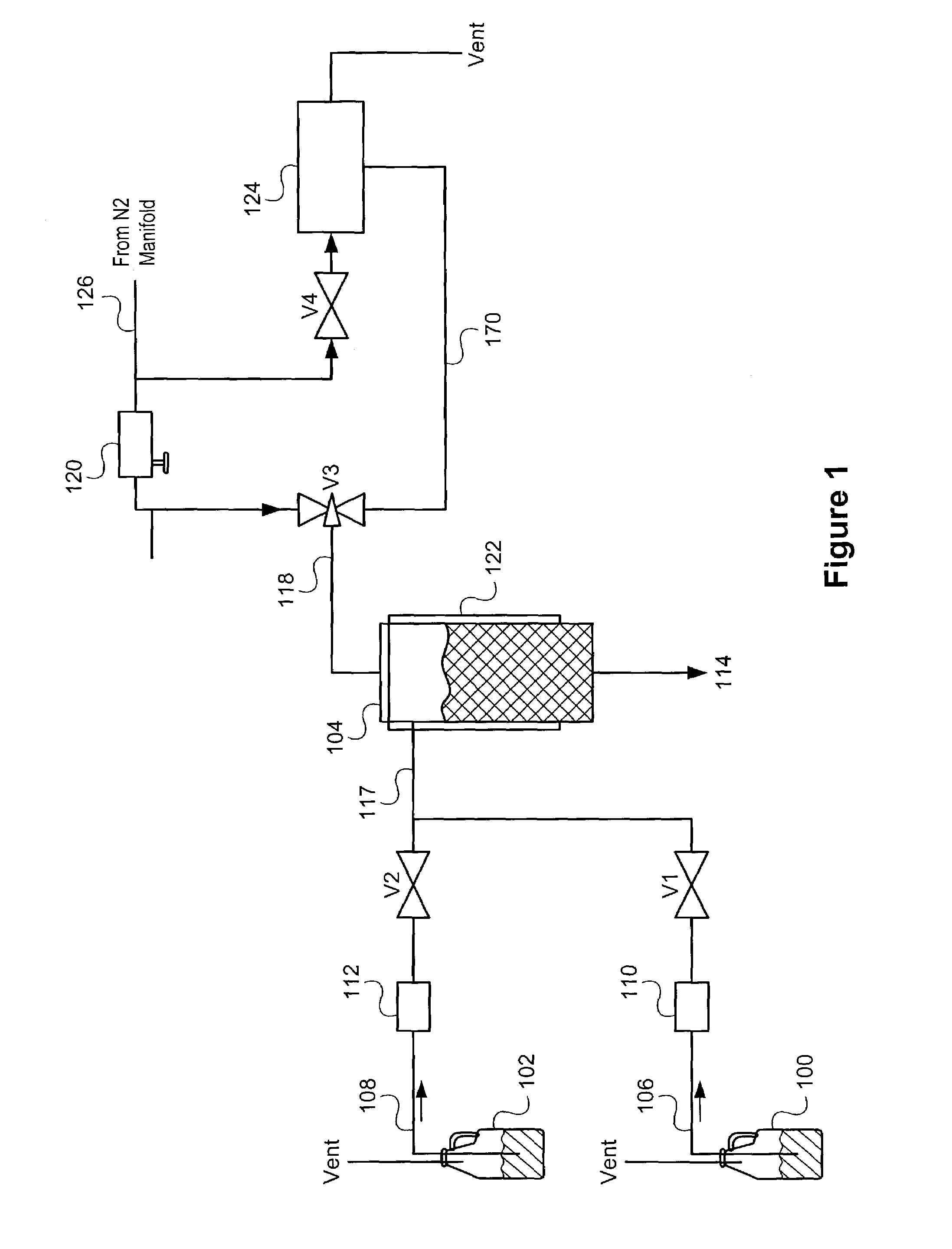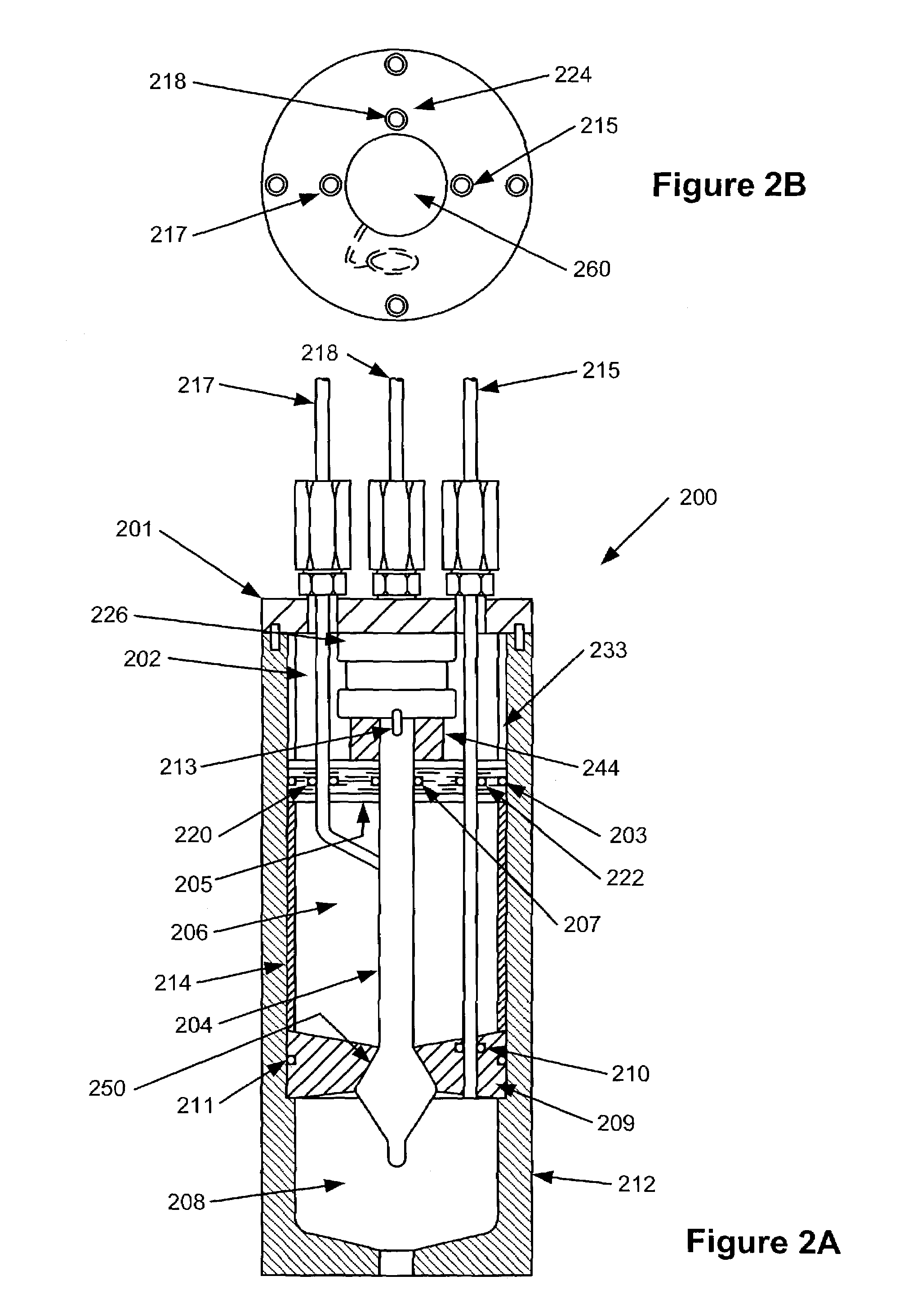Chemical mix and delivery systems and methods thereof
a technology of chemical mix and delivery system, applied in the direction of liquid transfer device, instrument, photosensitive material processing, etc., can solve the problems of track tool not being able to deliver photoresist when requested, bubbles may arise, imperfect images may be formed in the photolithography process,
- Summary
- Abstract
- Description
- Claims
- Application Information
AI Technical Summary
Benefits of technology
Problems solved by technology
Method used
Image
Examples
first embodiment
[0033]In the first embodiment, the present invention includes a multi-reservoir load cell assembly 200 as shown in FIGS. 2A–2B. The assembly 200 can be part of the system shown in FIG. 3, and can replace the problematic single-reservoir 104 and bubble sensors 110, 112 of FIG. 1.
[0034]In this embodiment, the assembly 200, constructed of Teflon, SST, polypropylene or any chemical compatible material, includes an upper compartment 202, a main reservoir 206, and a buffer reservoir 208, all in an outer housing 212. The buffer reservoir 208 is sealed from the main reservoir 206 by a separator 209, and an o-ring seal 211 seals the perimeter of the separator 209 to the outer housing 212. The separator 209 uses a center conical hole 250 that allows an internal sealing shaft 204 to form a liquid and gas-tight seal with the separator 209. The separator 209 forms a liquid and gas-tight seal to the pneumatic tube 215 with an o-ring seal 210. The main reservoir 206 contains a middle sleeve 214 th...
second embodiment
[0048]the multi-reservoir load cell assembly 400 shown in FIGS. 4A–4B, includes a buffer reservoir 408, fastened and sealed by the o-rings 411 to the bottom cap 410. The output chemical flows through tube connection 401. Connected to the buffer reservoir 408 are a pneumatic tube 415, a chemical valve 407, a load cell separator 413, and the load cell 412. The load cell 412 is securely bolted to the buffer reservoir 408 and the other side is securely bolted to a rigid member (not shown) not part of the multi-reservoir load cell assembly 400. The outer sleeve 404 slips around the buffer reservoir 408 and rests against the bottom cap 410. The outer sleeve 404 is machined to allow the load cell 412 to pass through it unencumbered. End 405 of the valve 407 connects to the main reservoir 406 and the other end 409 connects to buffer reservoir 408. The main reservoir 406 is encapsulated and sealed, by o-rings in the upper cap 403. The upper cap 403 incorporates a stepped edge along its perip...
PUM
 Login to View More
Login to View More Abstract
Description
Claims
Application Information
 Login to View More
Login to View More - R&D
- Intellectual Property
- Life Sciences
- Materials
- Tech Scout
- Unparalleled Data Quality
- Higher Quality Content
- 60% Fewer Hallucinations
Browse by: Latest US Patents, China's latest patents, Technical Efficacy Thesaurus, Application Domain, Technology Topic, Popular Technical Reports.
© 2025 PatSnap. All rights reserved.Legal|Privacy policy|Modern Slavery Act Transparency Statement|Sitemap|About US| Contact US: help@patsnap.com



